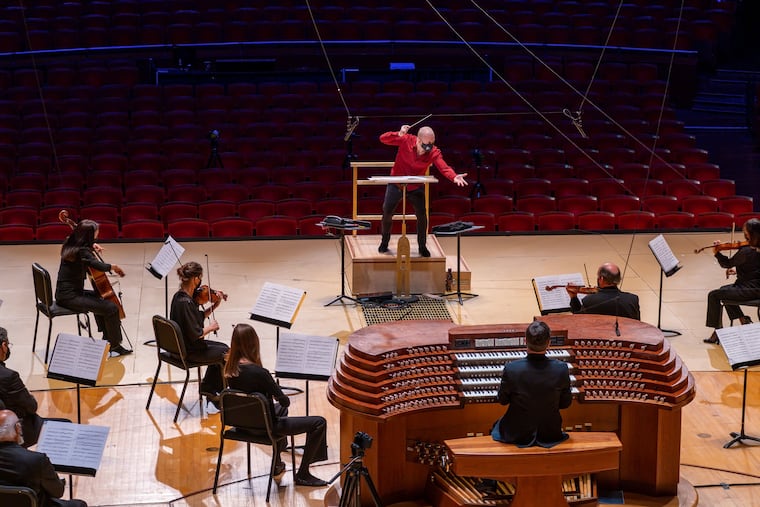Less rumble and terror from Philadelphia Orchestra organ, but it turns out that’s OK
Poulenc’s "Organ Concerto" is one of three works on this week's digital program, all from different sound-worlds. The compositional voices, old and new, are urgent. More from Louise Farrenc, please.

The Philadelphia Orchestra’s Digital Stage concerts are best considered through a something-lost, something-gained lens. The visceral thrill of being in the same room as Verizon Hall’s organ, for instance, doesn’t translate online — unless, perhaps, you happen to own some incredibly expensive playback equipment.
And yet, this week the Digital Stage program emerges as one of the best evangelists so far for the cause of the king of instruments. The way Paul Jacobs differentiated colors to suit the changing character of Poulenc’s Organ Concerto comes across clearly enough. There’s both a somber sweetness and a touch of humor in the piece, scored for organ, strings and timpani, and Jacobs knows just where to be austere, subtle, or bold.
And even if you don’t feel the same rumble and terror online as you would in the hall, you do get a view of the proceedings that is impossible ordinarily. Camera pans glide over the pipes, and you see Jacobs’ finger work at the console’s keyboards and his feet moving across the pedals. As a visual explainer, the Digital Stage format goes a long way in demystifying the instrument.
Poulenc’s concerto, from 1938, draws some of its inspiration from Bach, and combined with the two other works on the program, makes the point that no composer is an island. Michael-Thomas Foumai’s Concerto Grosso from 2015 occupies the “overture” position on the program. It’s a short piece — about five-and-a-half minutes long — and scored for just 14 players, but it makes a big impression. Racing and Stravinsky-kissed, the piece’s quick twists and turns give it a movie-score quality.
If anyone wonders about the lasting influence of John Williams in the concert hall, I think it’s fair to say some of his sound filters into this work (as does a little Danny Elfman in one brief, repeated gesture just before the work’s final stretch). The music evolves, and yet this is a piece that makes its statement in a single, potent burst.
The influences are many and varied in Louise Farrenc’s Symphony No. 2, performed by the orchestra and conductor Yannick Nézet-Séguin a little over a year ago and reprised for this online concert. The piece announces itself with an opening of Haydn-esque clarity, and there’s much to like about the entire first movement, which has some of the same joy and spaciousness as Beethoven’s early symphonies. Farrenc is in fact dealing in an orchestral palette that is essentially Beethoven’s.
And yet, unmistakable classicist though she may be, here is an original voice. That poignant oboe melody in the slow introduction, her imaginative empowering of winds, the surprising harmonic progressions of the inner two movements — these are the signatures of a composer from whom we’d like to hear more.
Yes, the shape of this Digital Stage program is conventional: (an ostensible) overture, concerto, and symphony. But when compositional voices are as urgent as these, the traditional framework becomes immaterial.
The Philadelphia Orchestra’s program of works by Foumai, Poulenc, and Farrenc streams April 29 at 8 p.m. through May 6 at 11 p.m. Tickets are $15 or $17. Also online through May 3, organist Paul Jacobs performs a free recital on the Fred J. Cooper Memorial Organ of works by Handel and Bach. philorch.org.